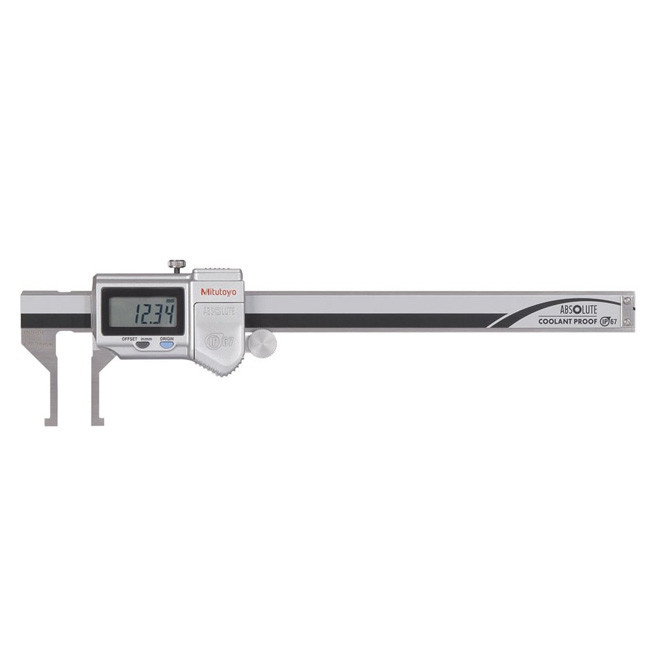The 573 series caliper has the ABSOLUTE electrostatic capacitance type linear encoder to help reduce overspeed errors. LCD resolution is 0.0005” (0.01mm). Functions include origin-setting, zero-setting, and power on/off automatic shutoff. This caliper is Ingress Protection 67 (IP67)-certified, helping ensure that the electronic components are resistant to debris and to submersion in liquid under standard conditions for up to 30 minutes. . An alarm alerts the user to low voltage and counting value composition errors. A rolling thumbwheel makes fine adjustments and a thumbscrew locks the scale’s position. The caliper has Statistical Process Control (SPC) data output capability; it outputs data using a serial data interface to a computer or other dedicated recording device using SPC cable with data switch (sold separately). The caliper includes, and is powered by, a single SR44 silver oxide cell battery that lasts approximately 3 years with normal use.
Calipers measure the distance between two opposing sides of an object. They make inside, outside, depth, or step measurements, according to their type. Calipers are commonly used in architecture, metalworking, mechanical engineering, and machining. The simplest calipers have two legs to mark the two points and require a ruler to take the measurement. More complex calipers use two sets of jaws instead of legs and have up to two graduated scales. Vernier, dial, and digital calipers give direct and accurate readings and are functionally identical, having a calibrated scale with a fixed jaw, and another jaw with a movable pointer that slides along the scale. The vernier caliper has a scale sliding parallel to the main scale for an additional, fractional reading to improve measurement precision. The dial caliper has a circular dial with a pointer on a toothed gear rack replacing the second vernier scale. As with the vernier, this second measurement is added to the reading from the main scale to obtain the result. The digital caliper takes a differential by zeroing the display at any point along the slide, with an LCD that displays a single value in English and/or metric units.
- Accuracy: Refer to the list of specifications.
- Resolution*: 0.01mm or .0005″/0.01mm
- Graduation**: 0.05mm
- Display*: LCD
- Length standard*: ABSOLUTE electrostatic capacitance type linear encoder
- response speed*: Unlimited
- Battery*: SR44 (1 pc.), 938882
- Battery life*: Approx. 3.5 years under normal use
- *Digital models **Analog models
- Origin-setting.
- ABS/INC switching,
- Power ON/OFF.
- Data hold.
- Data output.
- Inch/mm conversion (inch/mm models)
- Alarm: Low voltage.
- Counting value composition error
